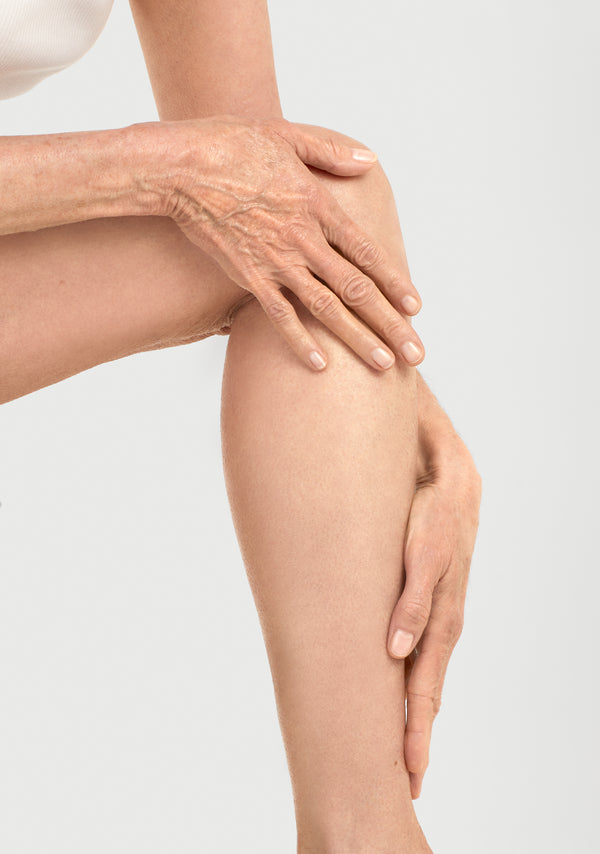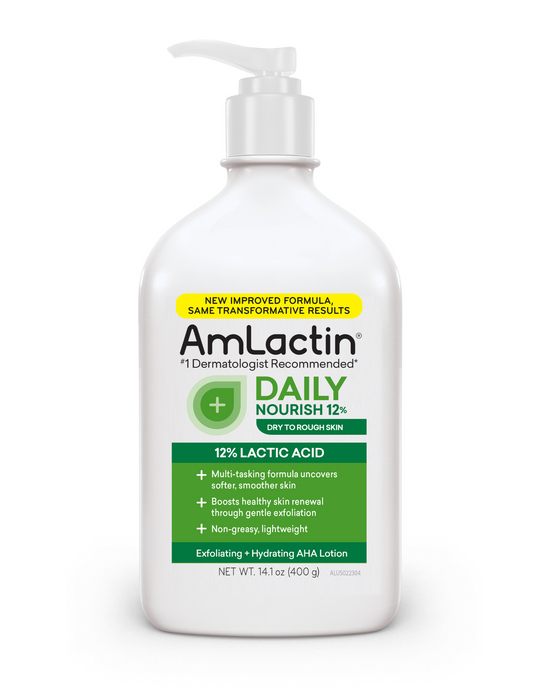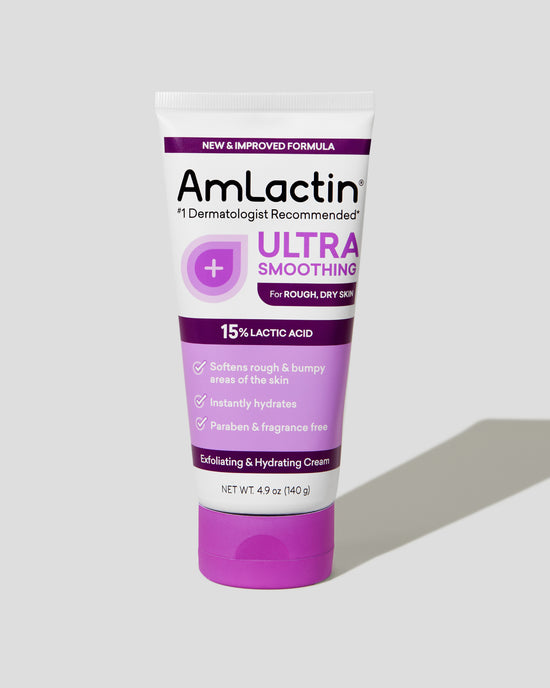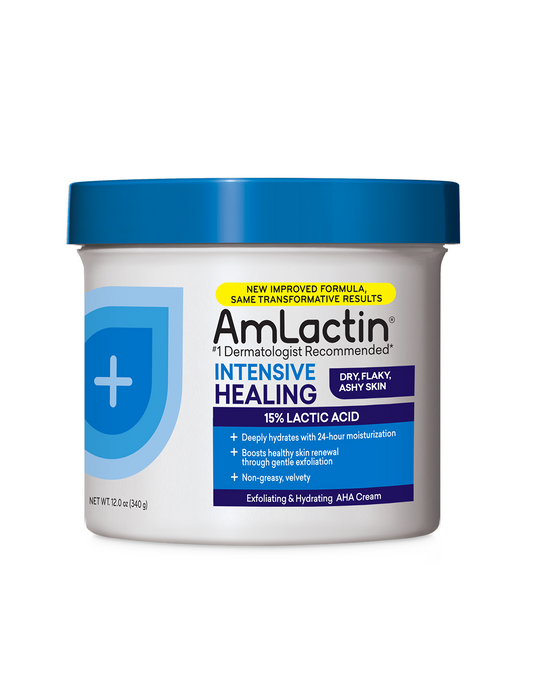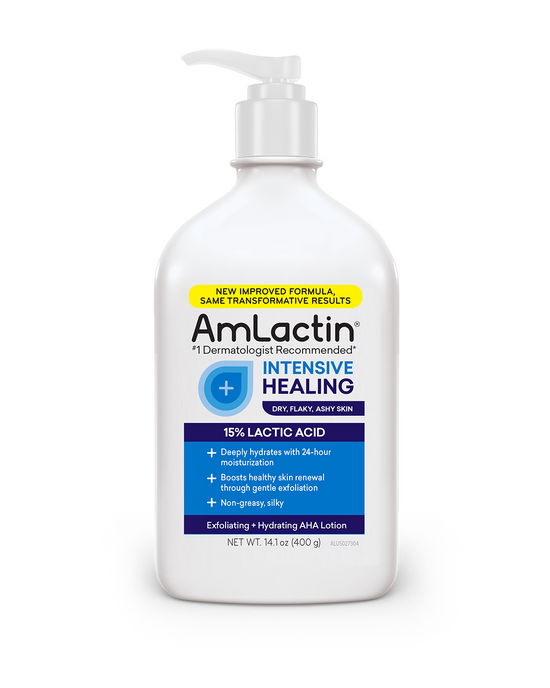Taking care of your skin may be one of the important things you can do for healthy aging, along with eating well and exercising. After all, our skin can be exposed to sun, wind, dirt, pollution, and potentially drying and damaging household products every day.
Luckily, we can moisturize and help protect our skin with a good skin care routine that doesn’t take much time. Think of this routine more like pampering and self-care than a chore.
One ingredient that can help your skin in multiple ways is lactic acid.
7 Reasons to Add Lactic Acid Products to Your Body Skin Care Routine
Lactic acid in skin care products isn’t just a fad. There are clear benefits for skin when lactic acid is applied in the right concentration. Once you start using lactic acid skin care products regularly, you may notice many of the following benefits:
1. Hydrates Well by Locking in Moisture
Lactic acid is a humectant. This means it pulls in and retains moisture deeper in the skin. You may notice your skin is more plump and less dry.
2. Gently Exfoliates for Brighter Skin
Like other alpha hydroxy acids (AHAs), lactic acid exfoliates your skin. It helps shed the outer layer of dead skin cells—more gently than other AHAs—to reveal smoother, more radiant skin underneath. This gentle exfoliation also allows skin creams and lotions to be absorbed better by the skin.
3. Softens and Smooths Skin
As an exfoliant, lactic acid can help soften rough patches of skin, such as on your elbows, knees, and heels. Regular use can lead to smoother, softer skin over all areas of your body.
4. Reduces Fine Lines and Wrinkles
Using lactic acid skin care products regularly helps promote skin cell turnover and can support collagen production. Collagen helps strengthen and tighten the skin. As we age, the body produces less collagen which makes our skin dryer, looser, and more likely to wrinkle. Stimulating collagen production can lead to firmer, more youthful-looking skin.
5. Evens Out Skin Tone
For many people, lactic acid can help fade dark spots and hyperpigmentation, leaving you with a more even skin tone.
6. Clears Pores and Helps Prevent Acne Breakouts
If you suffer from body acne, lactic acid can help. Because it exfoliates your skin, it can help prevent clogged pores and minimize body acne breakouts. If you’re already suffering from acne, especially if it’s severe, talk to your doctor first to see if a lactic acid cream could help. If you are using retinoids (like Refissa or Retin-A) or products with benzoyl peroxide, exfoliating with lactic acid in addition to these products may dry and irritate your skin, so they should not be used together.
7. Minimizes Signs of Keratosis Pilaris
Many people with the skin condition keratosis pilaris have seen the results lactic acid can bring. With keratosis pilaris, skin cells build up around hair follicles on the arms and thighs and create bumpy skin. Using lactic acid products like AmLactin KP Bumps Be Gone hydrating cream can smooth out the bumps by getting rid of that skin cell buildup.
What to Know Before You Add Lactic Acid Products to Your Skin Care Routine
Like many AHAs and other exfoliants, when using lactic acid products, sun protection is a must. Getting rid of dead skin—exfoliating—means your skin may burn more easily if unprotected from the sun. Use sunscreen and/or wear clothing that covers the skin when outdoors.
When using any product on your skin that’s new to you, always start with a patch test. Apply the cream or lotion to one or two small areas of skin and wait at least 24 hours to see if any irritation, redness, or swelling occurs. With some AHAs, including lactic acid, you may experience minor irritation at first that goes away quickly. If you have a severe reaction, wash the product off your skin immediately.
In some people with dark skin, using exfoliating acids can inflame the skin and cause dark patches or hyperpigmentation. Lactic acid does tend to be gentler, but if you have such irritation, do not continue to use it.
If you have sensitive skin, it can help to start with a lower concentration of lactic acid (like 5%) and work your way up. A scientific study found
If you have any existing skin condition—such as psoriasis or eczema—it’s a good idea to talk to your dermatologist before trying any new skin products, especially ones with exfoliating ingredients. But also know this—lactic acid is often an ingredient in treatments for those and other skin conditions because of the gentle way it gets rid of dead skin cells.
Long-Term Lactic Acid Benefits
Using lactic acid skin creams and lotions regularly helps boost skin cell turnover through gentle exfoliation, resulting in skin renewal. Because of this and because of lactic acid’s hydrating effect, the long-term use of lactic acid creams and lotions can help clear your pores, smooth out your skin texture, and leave you with tighter, brighter skin. And it’s never too late to start!

